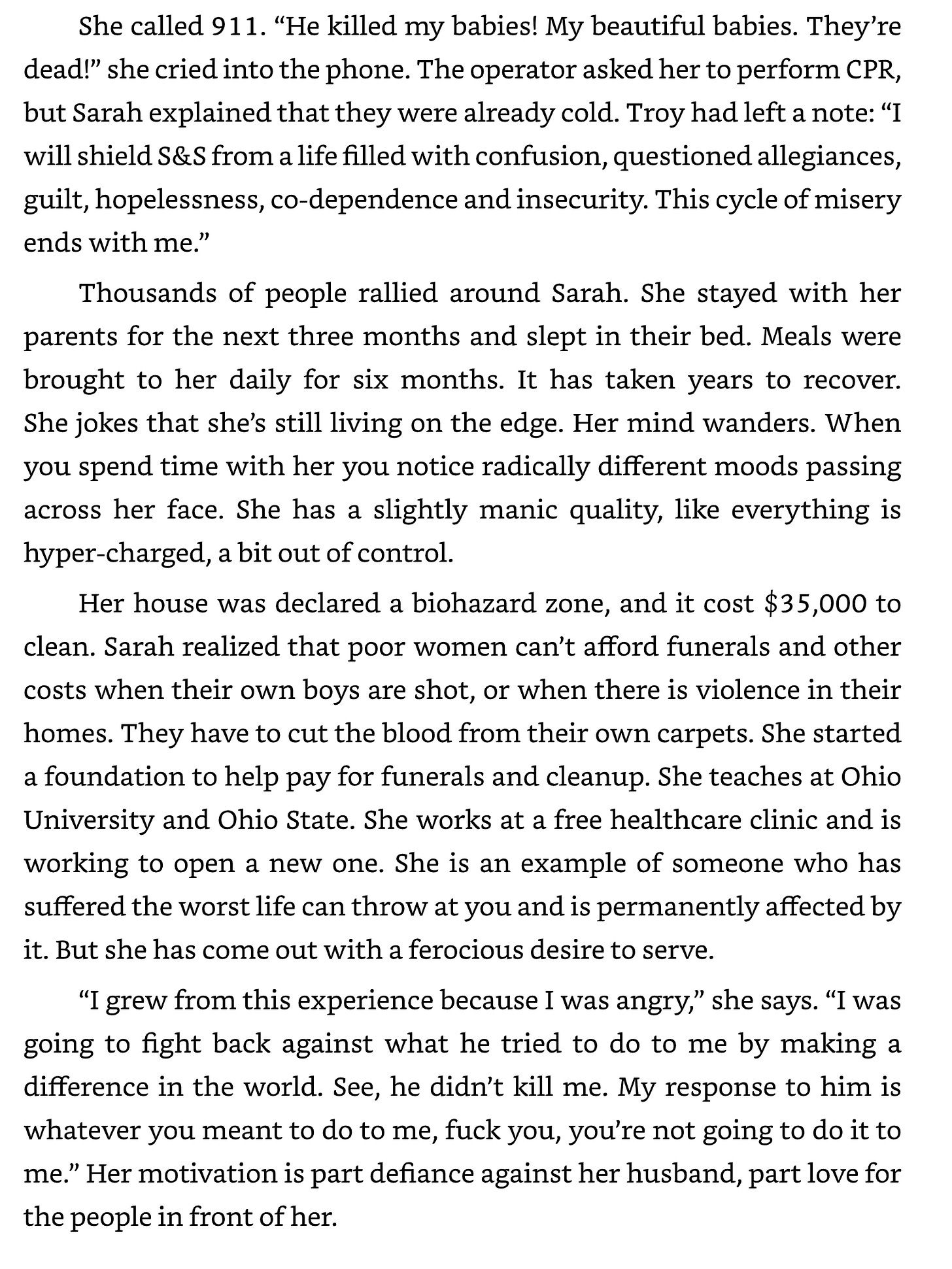I’m 44. Cusping on 45.
The days are long. But the years are short.
2020 was an inflection point year for me. Leaving a job I’d had for thirteen years. My dad’s cancer returning. Manuela getting pregnant. Stumbling through COVID. And not knowing what was next for me professionally.
That year, prior to our son’s October arrival, I engaged in a hypomanic flurry of activity to fill the empty work space.
Taking stock of it now, I’ve come to a conclusion that my wife could have told you from the jump: I spent the last four years attempting to do way too much shit.
Writing Burn Rate, launching it twice (hardcover and then paperback), becoming a mental health truth-teller (whatever that means), raising a fourth vintage of our VC fund, starting a new company, chairing my sister’s board, trying to be relevant as a husband for my entrepreneur wife, showing up for the family health roller coaster, moving from NYC to Chicago and Rio, and—most importantly—becoming a dad.
Why? What was the ugly truth underneath all that frenetic activity?
As Lincoln says in the movie Lincoln: “Why is this thus? And what is the reason for this thusness?”
Much of it seemed to be rooted in needing to chase a bigger and taller version of what I already spent the previous thirteen years doing. The dream for the second mountain, it seemed, was just like the first—except needing it to be more more more more. Ego. Money. Power. Legacy.
At some point: wtf?
It was time to ask myself some tough questions.
Why did I need to go bigger and better?
How much money or success is enough money or success?
And if everything comes with a price, what was that price of the pursuit of more? What was the opportunity cost?
The catalyst for this mental journey was David Brooks’s book The Second Mountain. It serves as a nice companion piece to an absolute must read for any middle-aged person: Richard Rohr’s Falling Upward.
Together, these two books have helped me make sense of the intertwined experiences of becoming a father and the husband of a mother, facing my own dad’s mortality, and sharing my journey with bipolar with the world.
Reading The Second Mountain inspired me to make some changes going forward on how I want to spend my professional time, and what that makes possible in my personal time. It’s in vogue to say that there is no difference between the two, that it’s all one integrated life.
I think there’s a decent chance that’s bullshit.
We only have so much attention in the moment. We are either watching our children play with excavators, or looking at our phones while they play with excavators. Those might seem like the same thing, but they’re not. When that child looks up to see what we are doing, and sees we are on our phones, we don’t even know they’ve looked up, because we’re not even looking. No judgment. Just facts on the nature of eye contact.
I won’t bore you with the details of the changes I am making, as all of it pales in comparison to the story I’d like to share instead.
Sarah Adkins’ story below reveals the basic recipe in The Second Mountain.
Climb mountain one. Build a career. Maybe make some money. Maybe find a partner. Maybe have kids.
Then: experience something that turns your life upside down (hopefully not as horrific as what Sarah went through).
Decide to climb a different mountain the second time, rooted in serving others.
Her story is a difficult. It is really challenging to read. So skip it if today isn’t the day.
It’s hard enough out there.
Sending love to all of you today.
Gratefully yours,
Andy






